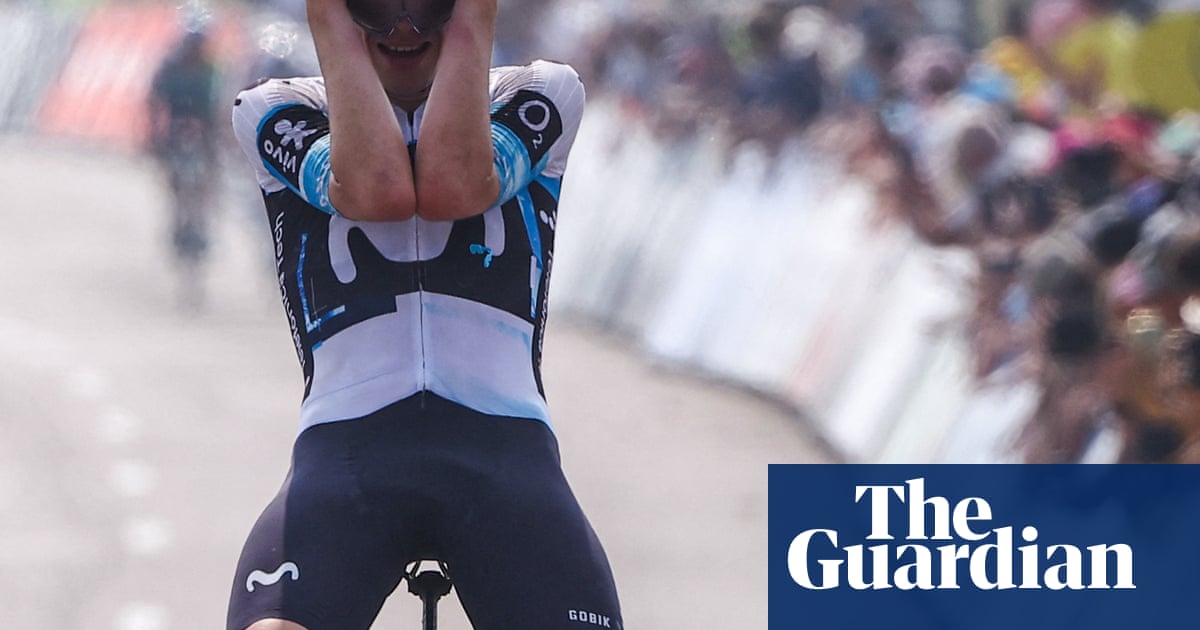Spain’s Iván Romeo won the third stage of the Criterium du Dauphiné when he streaked clear at the end of a 207km run from Brioude, claiming the overall lead. Romeo surprised his breakaway companions, including the Dutch world champion Mathieu van der Poel, to drop them in the final kilometres and lead the dash into the town of Charantonnay.
“I’ve been thinking about this stage for a month now. I can hardly believe it. It was one of the hardest days of my life, I wasn’t feeling well,” said time-trial specialist Romeo. “But I followed my instincts in the final. It’s the best day of the year for me. Hard work pays off.”
It was the second win of the 21-year-old Movistar rider’s career, and earned him the yellow leader’s jersey on the eve of the first time-trial in this edition of the Dauphiné. Romeo completed the hilly run across the southeast of France in 4hr 34min 10sec. Colombian Astana rider Harold Tejada came in second at 14sec, with Frenchman Louis Barré of Intermarché completing the podium.
The peloton, containing many of the race favourites, rolled in just over a minute later at the end of a day without any major incidents. One of those contenders for the general classification is Red Bull leader Florian Lipowitz – in the absence of last year’s winner Primoz Roglic – who did well to slip into the breakaway and come in just outside the podium. The German sits fourth overall, with a 42sec advantage over ninth-placed Tadej Pogacar.
The breakaway formed quickly after the start, and was composed of 13 riders. The first big break came on the Côte du Château Jaune, with its average gradient of more than 9%, situated 19km from the finish. After this final climb, only 10 riders remained amongst the contenders for the stage, and victory seemed to be in the grasp of Van der Poel – the fastest of the bunch.
But Romeo had other ideas, attacking for the first time with 9km remaining before going again and quickly opening up a sizeable gap on the chasing pack.
Wednesday’s fourth stage will be a 17.4km time-trial between Charmes-sur-Rhône and Saint-Péray.
